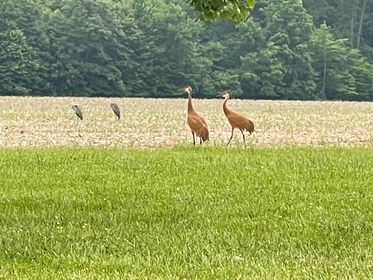Share this @internewscast.com

[WATCH: Previous coverage in the video player above.]
(WJW) – A large bird that was once completely gone from Ohio has been spotted more and more in recent years.
The latest volunteer count from the Ohio Department of Natural Resources shows a 4% increase in Sandhill Crane sightings compared to 2024.
Experts claim that the tall wading bird is a “seasonal resident,” traveling southward to escape the winter chill. This bird is often noted for its distinctive “rolling bugle call” and its “tendency to dance” when the spring mating season comes around.
An observer from Amherst captured the captivating ‘dance of the sandhill’ crane on video. In this footage, the nearly three-foot-tall birds can be seen in a grassy area, with one vocalizing, jumping, and flapping its wings enthusiastically.
However, witnessing a sandhill crane engaging in its dance is not limited to the mating season. Experts say that this display can occur at any time of year, though the exact reason remains unknown.
ODNR describes the dance of the sandhill crane as a series of rapid steps around each other, with wings partially extended and occasional leaps up to eight feet high. This performance also involves bowing to one another.
The giant bird’s wingspan typically ranges between 6 to 7 feet, according to wildlife officials.
As stated by the ODNR, the sandhill crane is classified as an endangered species within Ohio. In recent years, volunteers have been aiding wildlife officials in monitoring their population status. These efforts have indicated a consistent rise in observations:
- 2025 428 (31 counties surveyed)
- 2024: 412 (32 counties surveyed)
- 2023: 357 (30 counties surveyed)
- 2022: 311 (26 counties surveyed)
- 2021: 160 (five counties surveyed)
This year, volunteers conducted surveys in 31 counties, discovering cranes in 24 of these locations. ODNR reports that the counties with the highest number of sandhill cranes during the 2025 survey were:
- Wayne (101)
- Lucas (97)
- Ottawa (59)
- Geauga (51)
- Sandusky (19)
You are most likely to spot a sandhill crane in wetland areas. Learn more about the migratory bird, here.












